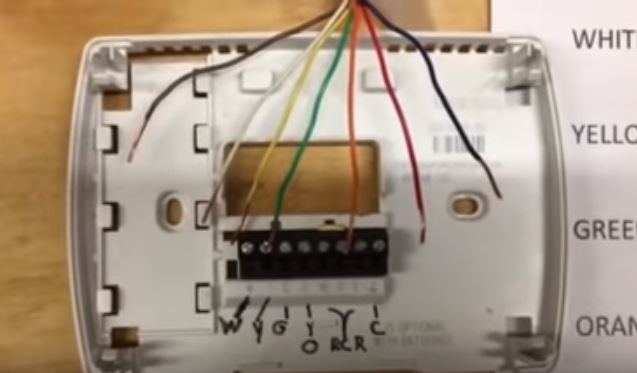You must have seen thermostat in various electrical equipment at your home. Inside a thermostat, there are many strands of copper wire which are covered inside a colored shell to provide insulation from damage. And these strands of wires are further enclosed in a protective sheathing before connecting it to some specific point. There is a significance of each individual color as every wire color has to be coded to a certain point in a systematic manner. And there are no chances for the working of thermostat if all these colored wires are not connected at their respective points.
Thermostat wiring colors help technicians to connect each wire at the right port on the board. However, in the case of swapping of wires, it is not necessary to ensure the connection of wires to a specific color on board. Otherwise, the connection of each colored wired has to be made at a specific port to ensure the flow of current. It is very important to take care of the marking of colors on each wire when you choose to replace your old thermostat with the smart or wifi-enabled thermostat. This will help to easily connect the colored wires on the new smart thermostat. Corresponding to each marking, there is a certain color code which also carries its description (can be read from user manual). There are different types of thermostat wires which are available in the market. The basic types are explained below in detail.
Thermostat Wire Types
Well, thermostat wires are categorized on the basis of the number of colored wires. Depending on the type of equipment used in a thermostat, the number of colored wires used also changes to communicate the message from a thermostat. There are either 18 or 20 gauges which could be used in a thermostat. The one with 18 gauges has 5 strands which simply means it has 5 conductors to communicate a message to and from a thermostat. Usually, 2 conductors are sufficient in the case of simple heating systems. Whereas in the multi-stage heating systems, around 8 conductors are required to ensure communication between a thermostat and other elements.
If you want to use a thermostat for short distances such as then it is recommended to use 20 gauge. Otherwise, for a long distance, 18 gauge is required as it would prevent the data from getting weak during traveling a long distance. All the straight wire connection in modern thermostat doesn’t require stripping of wires whereas, in the normal thermostat, you have to use a pocket knife to trim about 0.25 inches of the colored coating to expose the wire.

